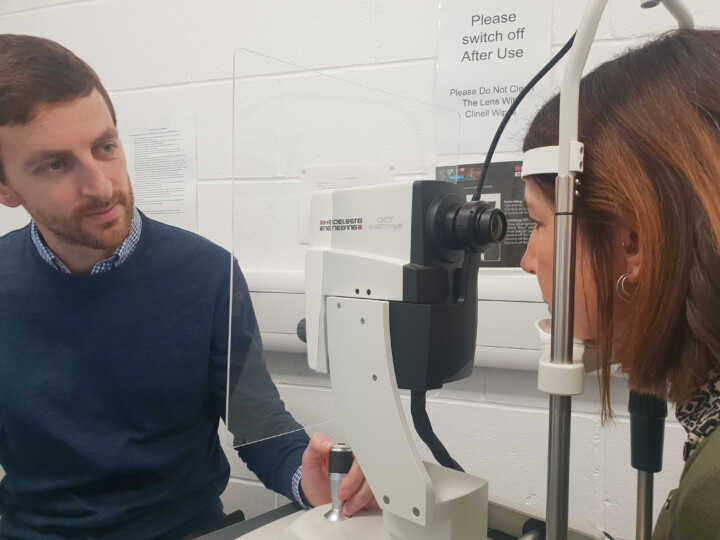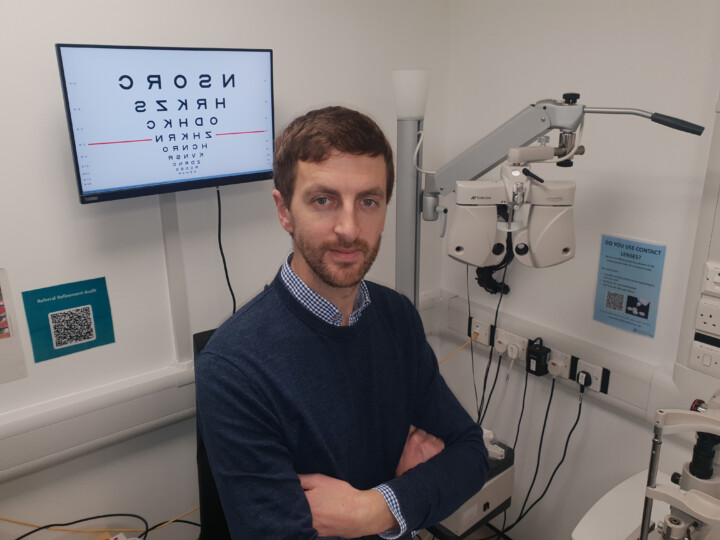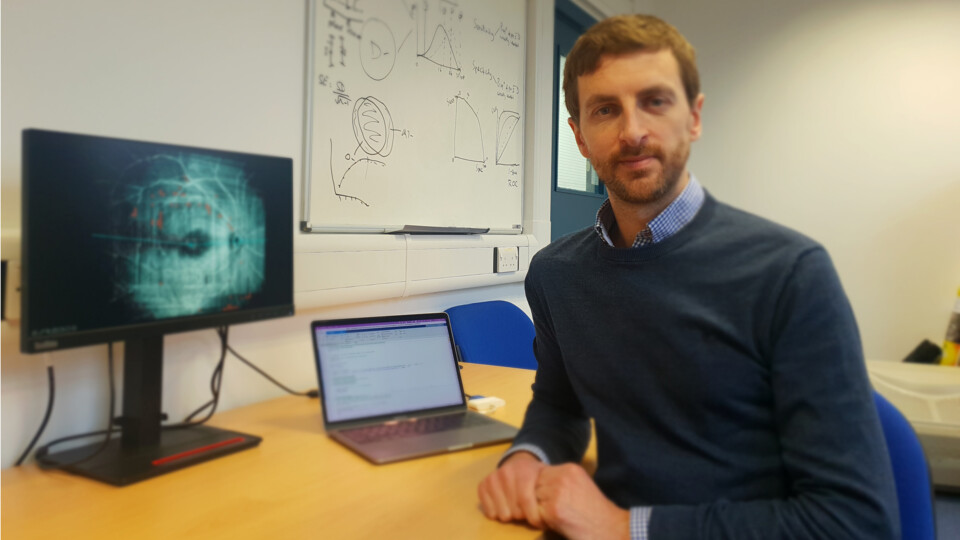£1.18 million glaucoma study will take a fresh look at retina scanning technology
A £1.18m University of Bradford project funded by the Medical Research Council could help improve diagnosis of glaucoma while reducing misdiagnosis rates.
Glaucoma is the world’s leading cause of irreversible blindness, affecting 3% of those aged over 40 in the UK. It is also becoming more common as the population ages, with 112 million people worldwide predicted to be affected by 2040.

Optometrist Dr Jonathan Denniss, an Associate Professor in the School of Optometry & Vision Science, said effective treatment of glaucoma required accurate early diagnosis and that current detection rates could be improved.
He said: “Existing diagnostic imaging for glaucoma uses optical coherence tomography (OCT) which is fast, non-invasive, and straightforward to use. However, glaucoma diagnosis is difficult and misidentification of healthy eyes as glaucoma is common, costing the NHS over £36 million per year. In addition, current techniques also miss 20-30% of true cases, contributing to preventable sight loss.”
Dr Denniss said the current approach to OCT focused on measuring the thinning of retinal tissue in cross-sectional (front-to-back) slices. The proposed new method works with existing equipment to create new 3D images that provide improved diagnostic information. Dr Denniss said a reduction in the number of false positives of just 5% would equate to a saving of around £1 million a year for the NHS.

He added: “When we tested it on a small group of patients, the technique detected more early defects than existing approaches. It also showed potential to reduce false positives, which means fewer people being referred for treatment unnecessarily.”
The four-year project is due to begin in April 2025 and will be supported by researcher Dr Riccardo Cheloni who conducted the initial work on the new technique during his PhD studies at the University of Bradford.

